Link
Dr. Pravin patil is the best rheumatologist in pune providing excellent line of treatment based on his vast knowledge base.
0 notes
Text
What is Osteoporosis?
Osteoporosis is a disease of the bones. It happens when the body fails to form enough new bone or lose too much bone or both. As a result, your bones become weak and may break from a minor fall or in serious cases even bumping into furniture leads to a fracture.
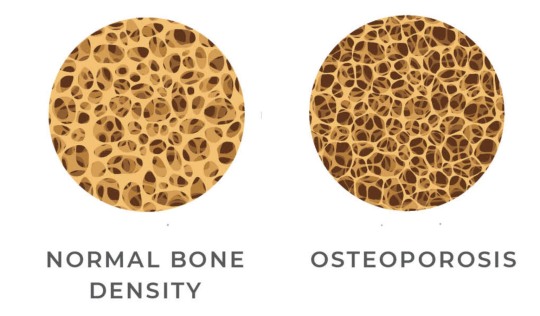
Osteoporosis is often called “the silent disease” because bone loss usually occurs gradually over the years without symptoms. Many people aren’t aware that they have osteoporosis until they either have a bone densitometry test (DEXA) or have a minor fall which causes a bone to break. Often, this “fragility fracture” (a fracture resulting from a mild fall from standing height) is the first sign of osteoporosis.
When someone is diagnosed with osteoporosis, it is important to investigate for causes of osteoporosis other than aging.
What are the symptoms of osteoporosis?
It is very important to be aware that there are no symptoms in the early stages of bone loss. But once bones have been weakened by osteoporosis, you may have signs and symptoms that include:
Back pain, caused by a fractured or collapsed vertebra
Loss of height over time
A stooped posture
A bone fracture that occurs much more easily than expected
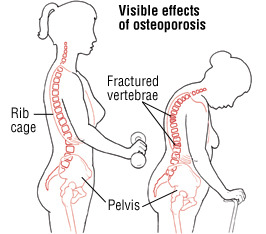
1 minute screening test for osteoporosis
Do you have a family member diagnosed with osteoporosis or fracture after a minor fall?
Have you ever had a fracture after a minor fall?
Have you taken steroid tablets for more than 3 months?
Have you lost height?
Does your upper back look more rounded than normal?
Do you weight <50kg?
Do you regularly drink excess alcohol?
Do you smoke regularly?
Did you undergo menopause before the age of 45?
Have your periods stopped for 12 months or more (other than because of pregnancy)?
This could be osteoporosis. Consult a Rheumatologist. Delay can cause fracture and disability.
Five simple steps for bone health and osteoporosis prevention –
Get your daily recommended amount of calcium and vitamin D.
Be physically active every day. Improve strength and balance.
Avoid smoking and excessive alcohol.
Discuss with a specialist about bone health.
Have a bone density test and take medication when appropriate. Testing is a simple, painless procedure.
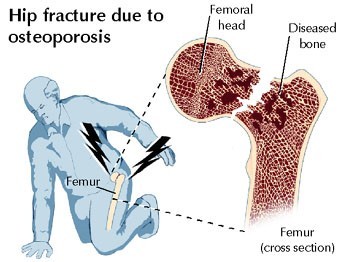
0 notes
Text
What kills patients with rheumatoid arthritis?

Patients with rheumatoid arthritis (RA) die at a younger age. Do you know what is the commonest cause of death in patients with RA?
The incidence of heart attacks is much higher in patients with RA. RA is a separate risk factor for heart disease just like high cholesterol, diabetes and high blood pressure.
It is important for people with RA to make lifestyle changes to reduce risk of heart attacks. Measures like quitting smoking, weight reduction, lowering cholesterol and blood pressure could help to reduce the risk in people with RA.
Current evidence:
Arthritis sufferers are far more likely to die from heart attacks and strokes, a major study has recently revealed. Those with RA are 40 per cent at higher risk of irregular heartbeats (atrial fibrillation) and 30 per cent higher risk of strokes than the general public.
The risk of heart attack for RA patients is comparable to those with type 2 diabetes, according to the conclusions of two studies presented at the Annual Congress of the European League Against Rheumatism.
Patients with untreated or poorly controlled RA are at higher risk of getting heart attacks and early death. Early treatment with disease-modifying anti-rheumatic drugs (D-MARDs) aiming for complete control of disease activity within the first year of disease is required.
Appropriate treatment of RA can protect patients from developing heart problems and such therapy to be commenced early in the disease.
SELF MANAGEMENT FOR ARTHRITIS & HEART DISEASE
Maintaining a healthy lifestyle with diet, exercise and weight reduction can improve your risk of heart disease.
WEIGHT LOSS
Being overweight and obese are major risk factors for heart disease. If you are overweight, losing weight can reduce that risk. If you already have heart disease, losing weight can improve them.
EXERCISE
Exercise is important for everyone. Research shows that 30 minutes of exercise five days a week can lower blood pressure, cholesterol levels and risk of heart attacks. People with arthritis often think physical activity will worsen their pain and arthritis. However, exercise actually improves pain and joint mobility in people with arthritis. Check with your doctor or physiotherapist about the right program for you.
DIET
While diet does not have an immediate effect on arthritis symptoms, a healthy, balanced diet is important to improve general health, minimize the risk of heart disease and control weight, which plays an important role in both diseases. A healthy diet should consist of whole grains, vegetables, fruits and less sugar and salt.
Take following steps
These changes can reduce your risk of heart disease and give you a greater sense of well-being.
Quit smoking. Give up cigarettes, cigars and pipes permanently.
Decrease salt intake.
Avoid fried foods and processed foods containing trans fats.
Be active often. Stick to a structured exercise program and choose more active options as you go through daily tasks.
Action from doctors:
Annual tests for measuring heart attack risk is recommended for all RA patients.
Lifestyle recommendations (on areas including diet, exercise, smoking cessation and stress management) should be given to all inflammatory rheumatic disease patients.
Treatment with statins and/or anti-hypertensives should be considered.
Early treatment of RA with disease-modifying anti-rheumatic drugs (D-MARDs) within the first year of disease is required.
0 notes
Photo

Which are the vaccinations available in India?
Answer: There are two types of vaccines available in India:
1. Covishield - Serum Institute, Pune
2. Covaxin - Bharat Biotech.
For further details visit our website - https://www.punerheumatologist.com/
Dr. Pravin Patil (Rheumatologist in Pune)
0 notes
Text
7 Common Rheumatoid Arthritis Medication Mistakes
People with rheumatoid arthritis (RA) are prescribed medications. Taking medications regularly and following correct instructions is very important. It is the responsibility of the patients to know their medications well and avoid making mistakes, which can have serious consequences.

Mistake No. 1:You take Methotrexate daily instead of once a week.
Methotrexate, the most commonly prescribed drug for RA, is usually taken weekly. Sometimes, it is prescribed twice a week. It should be taken one day a week – on the same day each week (e.g., every Saturday). It is not taken daily like many medications. Methotrexate tablets are available in different strengths like 2.5, 5, 7.5, 10, 15, 20 and 25 mg. The usual starting dose for adults with RA is 15 mg once a week. The total dose of methotrexate can be increased to up to 25 mg each week if needed.
Too often we come across patients who mistakenly take methotrexate daily rather than weekly. That specific mistake can result in serious side effects related to toxicity. Errors can occur at the pharmacy, too, where mislabelling may direct a patient to take methotrexate daily versus weekly. Know that methotrexate for RA is a weekly drug.
Mistake No. 2: You forget to take folic acid tablets
Taking folic acid regularly is important to prevent side effects from methotrexate. Usually, folic acid is prescribed five days a week. Please note folic acid and methotrexate are completely different drugs. The brand name of these drugs could sound similar (e.g. Folvite/Folimax and Folitrax)
Mistake No. 3: You continue medications even during infection.
If you catch an infection that requires you to take antibiotics it is advised to withhold medications like methotrexate for 2 weeks and inform your rheumatologist.
Mistake No. 4: You stop medications abruptly
Keep taking your medications for the full time of treatment, even if you begin to feel better after a few days. Do not miss any doses. Sudden discontinuation of certain medications may pose a life-threatening situation.
Common reasons to stop medications –
‘I was worried about side effects
‘My parents/relatives suggested me to switch to alternative therapy’
‘I thought my body will get addicted to medications’
‘I was feeling fine
Mistake No. 5: You alter the dose or treatment regime against medical advice.
It is important to follow all the instruction of the doctor. Many patients try to minimize drug intake by either taking tablets alternate days or half doses. Suboptimal treatment can cause a flare-up of the disease. You may not be aware that certain tablets like sulfasalazine should not be broken. You should swallow Sulfasalazine enteric-coated tablet whole. Do not crush, break, or chew it. This is because they are specially coated to pass through your stomach before they are absorbed. Breaking the tablet could interfere with the special coating.
Mistake No. 6: You don’t tell all your doctors about everything you are taking
All your doctors should know what medications and supplements you are taking. People with RA typically have more than one doctor on their healthcare team. It is important for each of your doctors to have a complete and current medication list for you. Keeping all your doctors informed about your medications will help to prevent drug interactions. Do not neglect to provide each doctor with your full list. It’s your responsibility.
Mistake No. 7: You don’t inform your rheumatologist about information related to your pregnancy or breastfeeding.
You should consult with your rheumatologist if you are planning to get pregnant. Planning is the key. Some of the drugs used to treat RA can be continued while trying to conceive or even during the pregnancy. Certain medications like methotrexate and leflunomide should be stopped well in advance before you conceive.
Although you may be concerned about the possible harmful effects of taking RA drugs while pregnant, it is important to remember that uncontrolled arthritis during pregnancy can also have adverse effects on your baby such as low birth weight.
My Takeaway Advice
* Learn about each medication that you are taking.
* Don’t deviate from the prescribed regimen.
* Do not stop medications abruptly.
* Share with a rheumatologist if you are planning to get pregnant or taking alternative therapy.
Dr. Pravin Patil - Rheumatologist in Pune
0 notes
Text
I have been diagnosed to have Rheumatoid arthritis. What next?
To fight Rheumatoid Arthritis, you have to understand the condition inside and out. Try to learn everything you can about this disease. It makes a huge difference if your initial experience of care is positive. As they say, a good beginning is half the battle won! Similarly, a correct diagnosis is the most important step.

You will be requested to have regular blood tests. This helps doctors to identify if you are developing any side effects related to medications. Also, certain blood tests are requested to understand the response to treatment. Here are some commonly requested monitoring blood tests – CBC (Complete Blood Count), SGPT (liver function test) and ESR, CRP (inflammatory markers).
2. Quit Smoking –
Get advice and support on how to quit. Having Rheumatoid arthritis puts patients at increased risk of heart disease and smoking further increases this risk. Evidence shows that Rheumatoid arthritis treatment is less effective in people who continue to smoke.
3. Build Support –
Patients living with RA should discuss with family and friends the impact RA is having on their working life, emotional and mental health.
4. Access to the Multidisciplinary Team –
To help manage your RA you should have the opportunity to see specialist professionals including a rheumatologist, physiotherapist, dietician and psychologist if required.
5. Get Involved–
Try to get involved in your treatment. Show interest in understanding medications and symptoms. Learn more about your disease by joining a patient support group, reading information booklets, online forums or any other educational opportunities.
6. Access to a Specialist –
You should know how to get access to your doctor when you need it, for instance when experiencing side effects to medications or for help if you flare.
7. Exercise –
Ask your physiotherapist about an individual exercise programme designed for you. Exercise is essential and plays a key role in controlling the symptoms of RA including fatigue, pain, and referred pain. It’s also important to maintain a generally healthy lifestyle including a healthy diet and appropriate weight.
8. Pregnancy –
Get information and specialist care if you are planning to have a baby. Your RA will need to be more tightly controlled and monitored during family planning for both prospective mothers and fathers.
In addition, the following are highly recommended for people living with RA
• Have your blood cholesterol and sugar measured.
• Have your blood pressure measured and recorded and set a personal target that is right for you.
• Have your eyes checked – yes RA can affect eyes as well.
• Limit sugar and salt intake in your diet.
- Dr. Pravin Patil (Rheumatologist in Pune)
0 notes
Text
What type of arthritis do you have?
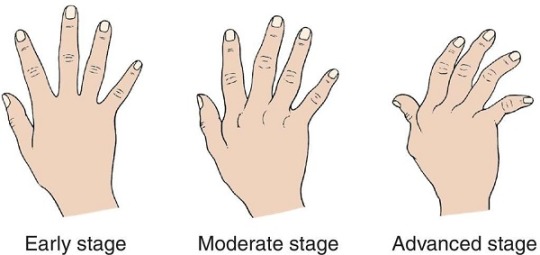
Did you know there is more than one type of arthritis? In fact, there are more than 100 types of arthritis. The prognosis is different for each type.
The term “arthritis” has been used as an umbrella term to describe a wide variety of rheumatic diseases, including the most common type, Osteoarthritis. Most people at some point in their lives will experience Osteoarthritis. It is a result of barriers around the joint wearing away, usually due to age, injury, or excessive pressure placed on the joint (due to activity or weight), and is localized to the place of wear. Typically when a person says“arthritis” they are referring to this type.
Being lumped with “arthritis,” other immune system-related arthritis such as Rheumatoid Arthritis (RA) does not get the attention it deserves.
Miss K 30-year-old IT professional recently diagnosed with RA told me, ‘’Soon after diagnosis, I realized that no one understood what Rheumatoid Arthritis was, most people only heard the word “arthritis” and would respond with “you are too young to have arthritis” or ‘’take ayurvedic treatment” or “diet and exercise will help’’.
Rheumatoid arthritis is a serious disease that is misunderstood by most people, including many professionals and medical personnel. RA is a type of autoimmune diseases. It causes damage not only to joints but also affects internal organs like the lungs and heart.
Common symptoms of Rheumatoid arthritis are
1. Constant or recurring pains in 1 or more joints pain
2. Stiffness on getting up after a period of inactivity or in the morning
3. Swelling in one or more joints
4. Joint pains affecting night sleep
5. Fatigue/difficulty in performing routine activities
6. The most common joints involved are the hands, wrists and feet.
7. The stiffness in the morning generally lasts longer than 45 minutes.
Don’t understand why such a common problem like ‘arthritis’ can cause so severe symptoms? I feel more tired than my 70 years old grandfather who actually has arthritis’’.
Since each type of arthritis is different, each type calls for a different approach to treatment. That means an accurate diagnosis is crucial for anyone who has arthritis. With the proper diagnosis, you’ll know what causes the pain. Then, you can be sure you’re taking the proper steps to relieve the pain and continue to be active.
Simply stating, “I have arthritis,” isn’t enough. Knowing the type of arthritis you have is the key to understand your illness and treatment.
As shown in the above pictures Rheumatoid arthritis is a progressive disease. Joints may look normal in the early stages. With recent advances in treatment, it is possible to halt disease progression. The majority of patients with arthritis can lead a normal life if treated appropriately.
0 notes
Text
Ankylosing Spondylitis - Its Causes and symptoms
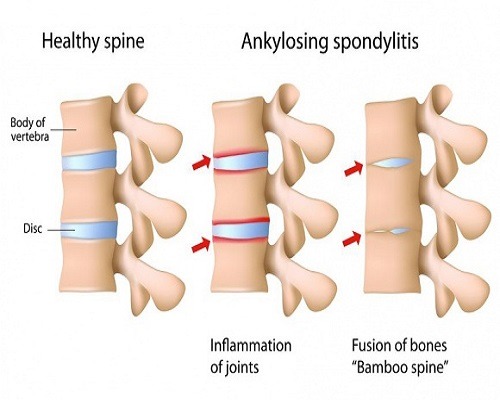
What is the cause?
The reason behind ankylosing spondylitis is unknown, but genes and inheritance play a great role in its aetiology. Scientists have discovered a gene called HLA-B27 that's found in addition to more than than 90% of individuals with AD. it's a member of the family of genes related to the system, which defends the body against infections.
Having the HLA-B27 gene doesn't necessarily mean that you simply will have AE. An individual carrying the HLA-B27 gene who doesn't have relatives with AD has only a 2% risk of developing this disease. For people with the HLA-B27 gene who have a father or sibling with AD, the danger of being affected by the disease is merely 20%. Therefore, factors apart from HLA-B27 play a task in the development of the disease.
Recent studies have focused on several bacteria that would influence the event of AD, but an outlined or specific infective agent has not yet been detected.
What are the symptoms?
Inflammation of AD usually begins around the sacroiliac junction, where the low spine attaches to the pelvis.
The most common early symptoms of AD are chronic pain and stiffness of the lower back and hips. This discomfort usually develops slowly for several weeks or months. In contrast to the back pain of various origin, the pain related to AD is worse during times of rest or inactivity. People with AD often awaken within the middle of the night with back pain and feel very stiff within the morning. Typically, the symptoms are lessened with movement and exercise.
Over time, pain and stiffness can reach the superior spine and even the cavity of the ribs and neck. Ultimately, inflammation can cause the sacral iliac bones and vertebrae to fuse or join. When bones are fused, the spine and neck lose their normal flexibility and become stiff. The thoracic cavity can even melt, which may limit the traditional expansion of the chest and make breathing difficult. Inflammation and pain also can be seen within the hips, shoulders, knees, or ankles, which may limit movement. The heels may be compromised, so you are feeling uncomfortable standing or walking on hard surfaces.
Ankylosing spondylitis is a systemic disease, which suggests it can affect other organs of the body in some people. The disease can cause fever, loss of appetite, fatigue and inflammation in organs like the lungs, heart and eyes.
Ocular inflammation (called iritis) occurs within a quarter of individuals with AD. Iritis causes redness and pain within the eye that gets worse once you look in bright light. this is often a significant disorder that needs immediate medical attention from an ophthalmologist (eye specialist).
The symptoms of AD are often the same as those that occur in other diseases like psoriasis, inflammatory bowel disease, or Reiter’s syndrome (reactive arthritis). An appropriate diagnosis is vital to be prescribed the suitable ankylosing spondylitis treatment in Pune.
Dr. Pravin Patil is one such rheumatologist in Pune and also practices as a rheumatologist in nashik, who not only provides appropriate treatment for ADS but several other diseases like - joint pain.
0 notes
Text
What is Ankylosing Spondylitis?

Ankylosing spondylitis, or AD, is one typical example of the group of arthritis that primarily affects the spine or back, referred to as spondyloarthropathies, which include, additionally to this, psoriatic arthritis, reactive arthritis, undifferentiated spondyloarthropathies, Crohn-associated arthritis. and ulcerative colitis, SAPHO syndrome and certain subclasses of juvenile arthritis. Spondyl refers to the spine, it means inflammation. Ankylosing is a term which means rigid.
In AD, the joints and ligaments that normally allow the spine to manoeuvre and flex become inflamed. The inflammation produces pain and stiffness that typically begins within the lower back. Over time, the disease can reach the upper spine, chest and neck. As a result, joints and bones (vertebrae) can fuse, causing the spine to become rigid and inflexible. Other joints, like the hips, shoulders, knees or ankles can even become inflamed.
Ankylosing spondylitis can become a chronic (long-term) disease. The severity of symptoms and disability varies from person to person. Early diagnosis and appropriate lupus/sle treatment in Pune can help control the pain and stiffness related to ES and reduce or prevent further deformity.
The symptoms of AD occur more frequently in young men between sixteen and thirty years. The disease is a little less common in women, who have milder symptoms that are harder to diagnose. About 5% of individuals with AD develop it in childhood, children are more vulnerable to presenting it than girls. When children have ankylosing spondylitis, the symptoms usually start within the hips, knees, heels or big toe and then get to the spine.
More than 500,000 Indians have ankylosing spondylitis. Almost everyone who has EA has inherited the HLA-B27 gene. Dr. Pravin Patil is the Best Doctor for Rheumatology in Pune and is well know to cure the such diseases based on his knowledge and experience.
0 notes
Text
Ankylosing Spondylitis
Ankylosing spondylitis is an inflammatory disease that causes some of the bones to fuse which then affects the spines flexibility and also the body posture of the patient. It is mostly observed that men are more prone to it than women. The symptoms of the disease can be observed from adulthood.
It mostly affects:
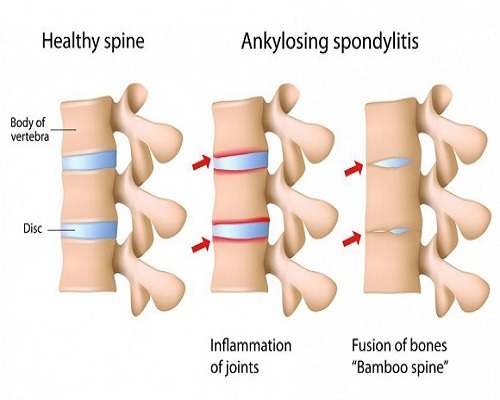
1. Lower Back
2. The base of the Spine and Pelvis
3. Vertebrates in the lower back
4. Joints in Spine
5. Heels
6. Pelvis
7. The cartilage between the breastbone and ribs
8. In severe cases formation of new bone
In severe cases, a new bone is formed in this new bone bridges the gap between vertebrae and eventually fuses sections of vertebrae. Which later become stiff and inflexible. In some cases it stiffens your rib cage, restricting your lung capacity and function.
Causes:
There is no specific cause, but its said genetic factors may also affect it. People having a gene called HLA-B27 are at a greater risk of developing ankylosing spondylitis. But not every individual having it may suffer from it. It is observed more in men as compared to women specifically during adulthood.
One such case study is about Ankylosing Spondylitis in a young patient. During the initial examination, Dr. Pravin Patil a rheumatologist in Pimpri Chinchwad diagnosed symptoms of Ankylosing Spondylitis in a very young patient. He then came up with a remedial plan of action considering the patient’s age and condition. It was then observed that the patient was responding excellently to biologics injections. In such cases, Patients can walk without support and lead a fairly normal life post-treatment. Biological injections should be considered as a treatment option in patients who are not doing well on conventional medications. Biological injections are prescribed by Rheumatologists who have experience in using this relatively new therapy. In this case, the patient has visibly gained a lot post-treatment by Dr. Pravin Patil. Who is known for his impeccable contribution in the field of Rheumatology & Ankylosing Spondylitis. He is one of the best rheumatologist in pune and is also famous for sandhivata treatment.
0 notes
Text
Who is a Rheumatologist? And why should one see a Rheumatologist?
Rheumatologists are physicians who are specifically trained to diagnose and treat over 100 types of arthritis and various related disorders that affect the body’s bones, joints, muscles, and connective tissue. Common examples are rheumatoid arthritis, sandhivata, osteoarthritis, lupus, ankylosing spondylitis and gout.
Rheumatic conditions are mostly chronic, which means the conditions persist over long periods, often lifetime, not necessary symptoms may be present. Rheumatic disorders affect a large amount of population around the world.
Why See a Rheumatologist?
A patient usually consults a rheumatologist when one needs:
An accurate diagnosis for chronic symptoms affecting the musculoskeletal system
Expertise in devising pain relief and treatment plans for a rheumatologic condition
Rheumatologists have the depth and breadth of experience necessary to accurately diagnose and treat a large type of conditions. A patient can then receive an early diagnosis and begin the suitable treatments before developing joint damage.
Diagnosis may be challenging:
Rheumatologic disorders are often difficult to diagnose because symptoms may come and go or mimic other conditions. For instance, rheumatoid arthritis, reactive arthritis, lupus and fibromyalgia can exhibit similar symptoms. The sooner a patient receives an accurate diagnosis, the better effective medical treatment and pain relief can begin.
Early treatment may facilitate long-term wellness:
Getting treatment early within the disease process helps a patient return to normal activities as soon as possible. Early treatment is additionally important for two more reasons:
Some rheumatic conditions are more respond well to treatment in their early stages.
Early treatment can minimize the long-term, cumulative damage that’s sometimes caused by chronic rheumatic conditions.
For example, among people that are diagnosed with rheumatoid arthritis but don’t receive treatment within the first 2 to three years, 20 to 30% experience a permanent disability that forestalls them from working.
Do Patients with Osteoarthritis Need a Rheumatologist?
A large number of populations is affected by osteoarthritis and is one among the foremost commonly treated and extensively researched medical conditions within the world.
What’s Osteoarthritis?
A person who has osteoarthritis may seek treatment from a rheumatologist, a medical care doctor, a physiatrist, an orthopedist, or a mix of these. Additionally, the patient could also be referred to a physical or occupational therapist.
What sort of health care professional an osteoarthritis patient should see depends on many factors, including the patient’s personal preferences, access and proximity to worry, and whether or not there are additional medical problems which will complicate diagnosis and treatment.
Rheumatologists typically play one amongst two roles in patient care:
A rheumatologist may serve as the patient’s primary medical doctor, providing therapy and coordinating to take care of the patient.
A rheumatologist may work in accordance with a patient to diagnose a condition and recommend a tailored treatment plan which will be implemented by the patient and his or her primary care doctor.
The second option is the most typical. In these cases a primary care provider oversees a patient’s care, and also the patient may revisit the rheumatologist once a year for monitoring or when the treatment plan has to be adjusted.
0 notes
Text
Arthritis - Its Causes, Types Symptoms and Risk Factors
Overview
Arthritis is swelling and tenderness deleted or more of your joints. The most symptoms of arthritis are joint pain and stiffness, which usually worsen with age. The common forms of arthritis are osteoarthritis and rheumatoid arthritis.
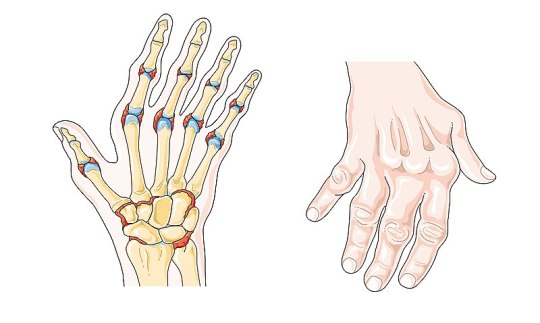
Osteoarthritis causes cartilage — the hard, slippery tissue that covers the ends of bones where they form a joint — to break down. Rheumatoid arthritisis a disease within which the system attacks the joints, beginning with the outermost lining of joints.
Uric acid crystals, which form when there's an excessive amount of uric acid in your blood, can cause gout. Infections or underlying diseases, like psoriasis or lupus, can cause other forms of arthritis.
Treatments vary depending on the sort of arthritis. The major goals of arthritis treatments are to decrease the symptoms and improve quality of life.
Types
Ankylosing spondylitis
Gout
Juvenile idiopathic arthritis
Osteoarthritis
Psoriatic arthritis
Reactive arthritis
Rheumatoid arthritis
Septic arthritis
Thumb arthritis
Symptoms
The most common signs and symptoms of arthritis involve the joints. Based on the kind of arthritis you've got, your signs and symptoms may include:
Pain
Stiffness
Swelling
Redness
Decreased range of motion
Causes
The two main sorts of arthritis — osteoarthritis and atrophic arthritis — damage joints in several ways.
Osteoarthritis
The most common sort of arthritis, osteoarthritis involves wear-and-tear damage to your joint's cartilage — the hard, slick coating on the ends of bones where they form a joint. Cartilage cushions the ends of the bones and allows nearly frictionless joint motion, but enough damage may result in bone grinding directly on bone, which causes pain and restricted movement. This wear and tear can occur over a few years, or it may be hastened by a joint injury or infection.
Osteoarthritis also affects the complete joint. It causes changes within the bones and deterioration of the connective tissues that attach muscle to bone and hold the joint together. It also causes inflammation of the joint lining.
Rheumatoid Arthritis
In rheumatoid arthritis, the body's system attacks the lining of the joint capsule, a tricky membrane that encloses all the joint parts. This lining (synovial membrane) becomes inflamed and swollen. The disease process can eventually destroy cartilage and bone within the joint.
Risk Factors
Risk factors for arthritis include:
Family history. Some sorts of arthritis run in families, so you'll be more likely to develop arthritis if your parents or siblings have the disorder. Your genes can cause you to more vulnerable to environmental factors that can trigger arthritis.
Age: the chance of the many forms of arthritis — including osteoarthritis, rheumatoid arthritis and gout — increases with age.
Sex: Women are more likely than men to develop rheumatoid arthritis, while most of the those who have gout, another form of arthritis, are men.
Previous joint injury: those who have injured a joint, perhaps while playing a sport, are more likely to eventually develop arthritis therein joint.
Obesity: Carrying excess pounds puts stress on joints, particularly your knees, hips and spine. People with obesity have a greater risk of developing arthritis.
Complications:
Severe arthritis, particularly if it affects your hands or arms, can make it difficult for you to try and do daily tasks. Arthritis of weight-bearing joints can keep you from walking comfortably or sitting up straight. In some cases, joints may become twisted and deformed. Thus it's advised visiting the arthritis specialist doctor in pune - Dr. Pravin Patil.
0 notes
Video
Ankylosing spondylitis is a fusion of bones, which become rigid and reduces body movements. In recent years there has been a significant rise in number for the cases of ankylosing spondylitis specifically amongst young adults. This affects not only their joints but also affects their body posture which looks a little stooped towards the front.
Dr. Pravin Patil a well-known rheumatologist in nashik and pune. He makes sure to provide the best possible treatment to his patients and he has an excellent track record for the same. He has cured several patients for ankylosing spondylitis and continuous to do so in the future.
A similar such case for ankylosing spondylitis with peripheral arthritis was referred to him. The patient is a year young adult. Who complained about severe pain in the lower back, swelling in the knees, difficulty in standing and walking, he also had lost a significant amount of weight due to Ankylosing Spondylitis. Dr. Pravin Patil went through the case in detail and decided on the line of treatment for the patient. Initially, he started the patient on medication, in a few days the patient was responding extremely well to it and his symptoms started too improved drastically with medication only. In this case, the patient did not require any biological injections. To everyone’s surprise, the patient was able to walk without any support and had gained back the weight he had lost due to Ankylosing Spondylitis with Peripheral Arthritis only within three months.
Pravin Patil is also considered as one of the rheumatologist in pimpri chinchwad. He also provides treatment of lupus in pune and joint pain treatment in pune. For more information or updates on Ankylosing Spondylitis please visit https://www.punerheumatologist.com/ankylosing-spondylitis/ and on Rheumatology, you can visit http://www.punerheumatologist.com/
0 notes
Text
Ankylosing spondylitis
Ankylosing spondylitis is a systemic disease, which means symptoms may not be limited to the joints. People with the condition also may have fever, fatigue and weight loss. Eye inflammation (redness and pain) occurs in some people with spondylitis. In rare cases, lung and heart problems also may develop. Some people also have pain, stiffness and swelling in their hips, knees or ankles.
0 notes
Photo

Dr Pravin Patil is a consultant rheumatologist with extensive experience in modern treatment of arthritis and related autoimmune diseases. He has gained vast experience in general medicine and rheumatology during 10 years of practice in the UK. He has worked in the prestigious hospitals like University College London, Royal Free, Whipps Cross and Sounthend University Hospital. Before relocating to India he was working as a consultant rheumatologist at Southend University Hospital in the UK. He has published various scientific papers and review articles. Dr Patil has regularly presented his work at the international conferences like American College of Rheumatology, British Society of Rheumatology.
https://www.punerheumatologist.com/
1 note
·
View note
Link
Dr Pravin Patil is a consultant rheumatologist with extensive experience in the modern treatment of arthritis and related autoimmune diseases. He has gained vast experience in general medicine and rheumatology during 10 years of practice in the UK. He has worked in the prestigious hospitals like University College London, Royal Free, Whipps Cross and Sounthend University Hospital. Before relocating to India he was working as a consultant rheumatologist at Southend University Hospital in the UK. He has published various scientific papers and review articles. Dr Patil has regularly presented his work at the international conferences like American College of Rheumatology, British Society of Rheumatology.
2 notes
·
View notes